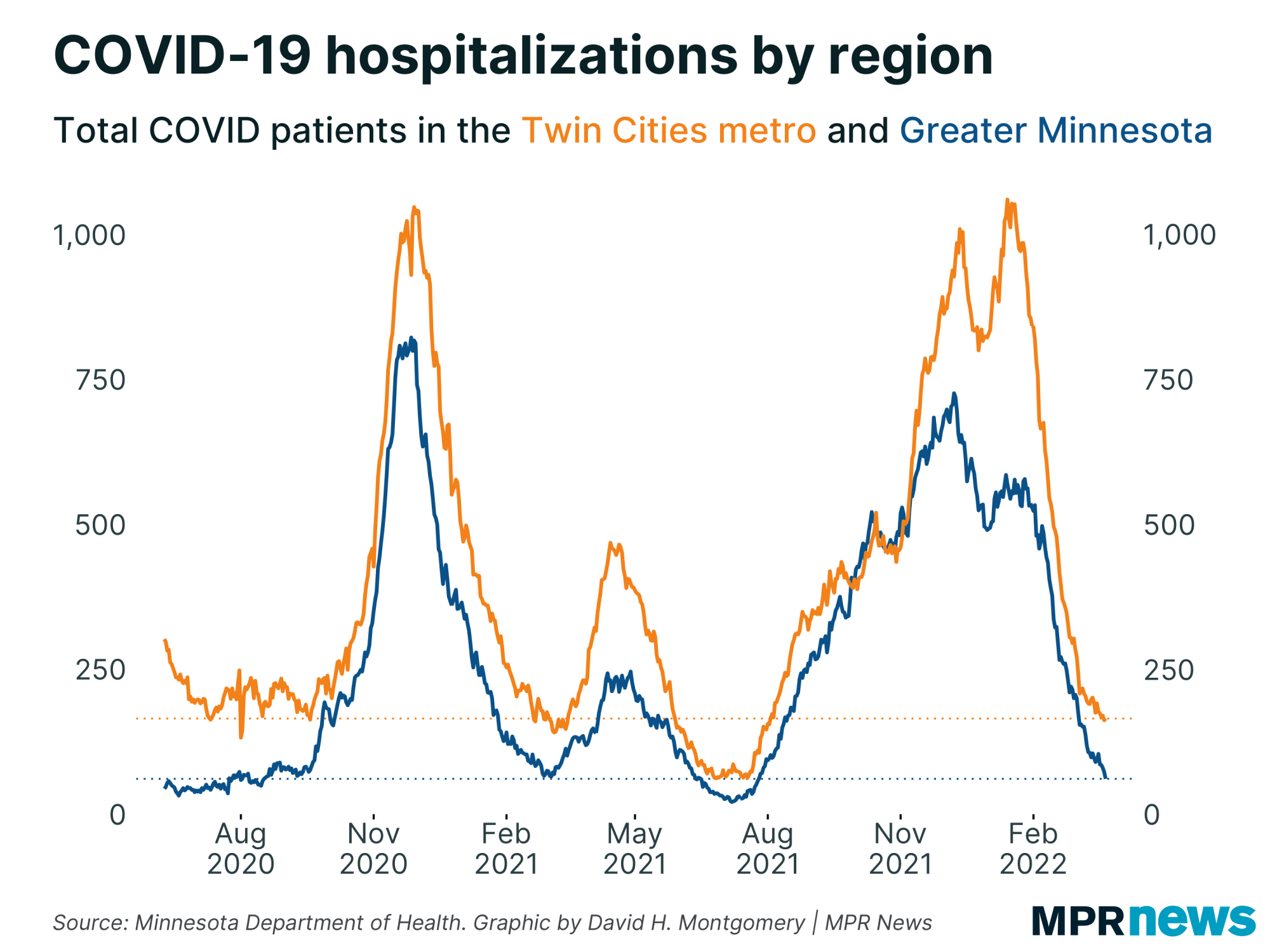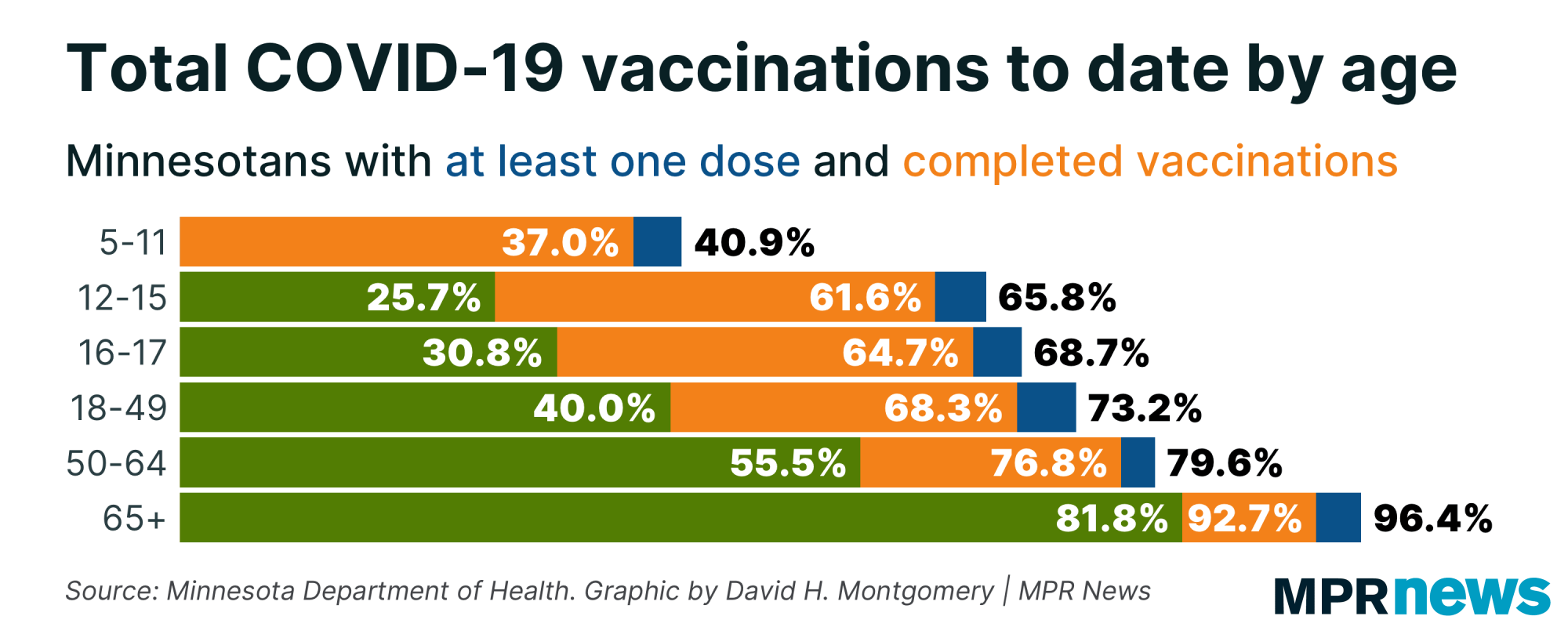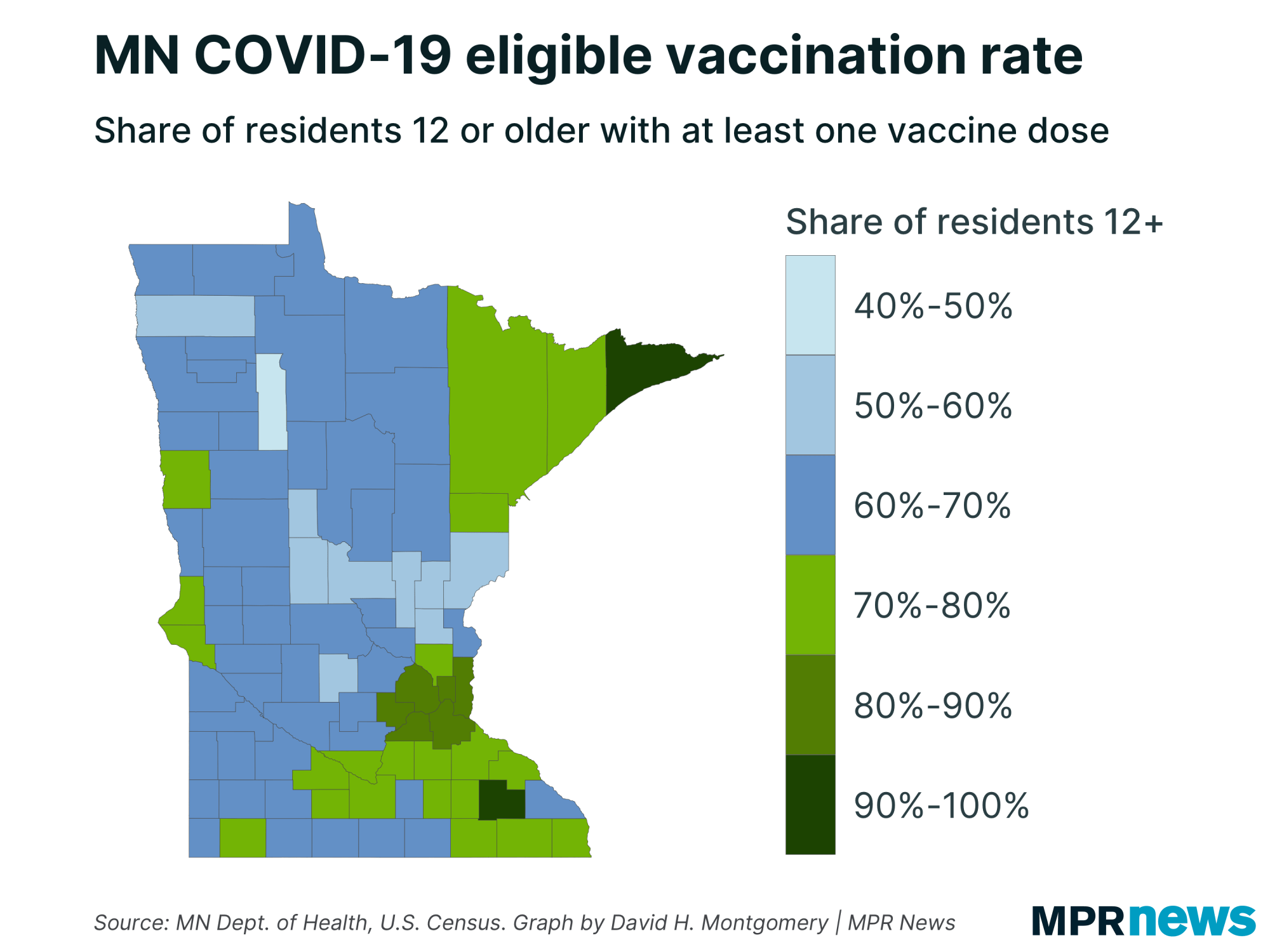Latest on COVID-19 in MN: Bad numbers accelerate as pandemic digs in

Go Deeper.
Create an account or log in to save stories.
Like this?
Thanks for liking this story! We have added it to a list of your favorite stories.
3 things to know:
Active cases jump again to new pandemic high
Positive test rate tops 18 percent; officials find 5 percent concerning
1,616 hospitalized, 260 in ICU
Updated: 3:51 p.m.
Minnesota continues to struggle with a massive COVID-19 surge that began in the Twin Cities metro area but is swamping much of the state now.
The newest state Health Department figures show confirmed, active cases topping 67,000 — a count that’s more than doubled since the middle of last week.
It’s now at its highest point in the pandemic.

The percentage of COVID tests coming back positive is trending above 18 percent, according to MPR News calculations — more than triple the 5 percent officials find concerning and the highest seven-day average in the pandemic.
Turn Up Your Support
MPR News helps you turn down the noise and build shared understanding. Turn up your support for this public resource and keep trusted journalism accessible to all.
The post-holidays surge is being driven almost entirely by COVID’s omicron mutation.
COVID hospitalizations remain high — 1,616 people are hospitalized with 260 needing intensive care. Bed use for those with the disease in metro-area hospitals has passed the December peak and is a hair away from an all-time record.

Hospitals and other care centers are being pushed to their limits with people seeking a COVID test — so much so that CentraCare and Carris Health, which operate in the north central part of the state, are now limiting testing to people who are showing symptoms of the virus.
In a statement, the health providers said they will not test asymptomatic people trying to return to work or school, for travel or who are just repeat testers because they are worried about being asymptomatic carriers. The new policy began Friday.

On Wednesday, Minneapolis and St. Paul leaders said their cities will temporarily require either a proof of vaccine or a recent negative COVID test for customers at all businesses where people are eating and drinking. On Thursday, Duluth’s mayor ordered a 30-day mask mandate for indoor public gathering spaces.
On Friday, the University of Minnesota announced a temporary proof of vaccination or negative test policy for indoor events of 200 or more attendees at all campuses, including for people who aren't students or staff of the University. A number of arts organizations in St. Paul, the Minnesota Opera, St. Paul Chamber Orchestra, the Ordway and Schubert Club, also announced this week that they will require vaccinated patrons to present proof of booster shots as well, starting Feb. 1.
Data collected by the federal Centers for Disease Control and Prevention show all Minnesota counties currently with a high level of viral spread.

Last week, Minnesota hospital CEOs begged people not to come to emergency rooms seeking COVID tests or other nonemergency care. “Hospitals are literally full,” the group warned. “ICUs are full, emergency departments are full, medical-surgical units are full, hallways are full, and surgeries are being canceled.”
On Wednesday, Gov. Tim Walz said he’d tap $40 million from the state’s share of federal COVID relief money to help boost hospital staffing, including costs for nurses.
The state's death toll stands at 10,971 including 32 deaths newly reported on Friday. Deaths typically follow a surge in cases and hospitalizations. In past COVID-19 waves, it’s been the last of the key metrics to improve.

Thanks to vaccinations, Minnesota is better positioned now than during its fall 2020 and spring 2021 spikes: 77 percent of state residents age 12 and older have received at least one vaccination shot, with almost 73 percent now completely vaccinated.

The state is seeing progress in getting boosters into Minnesotans who’ve already been vaccinated.
However, the struggle continues to get first shots into more Minnesotans, especially in central Minnesota. Wide gaps remain in the vaccination rates among regions and counties.

MPR News reporter Catharine Richert contributed to this report.


